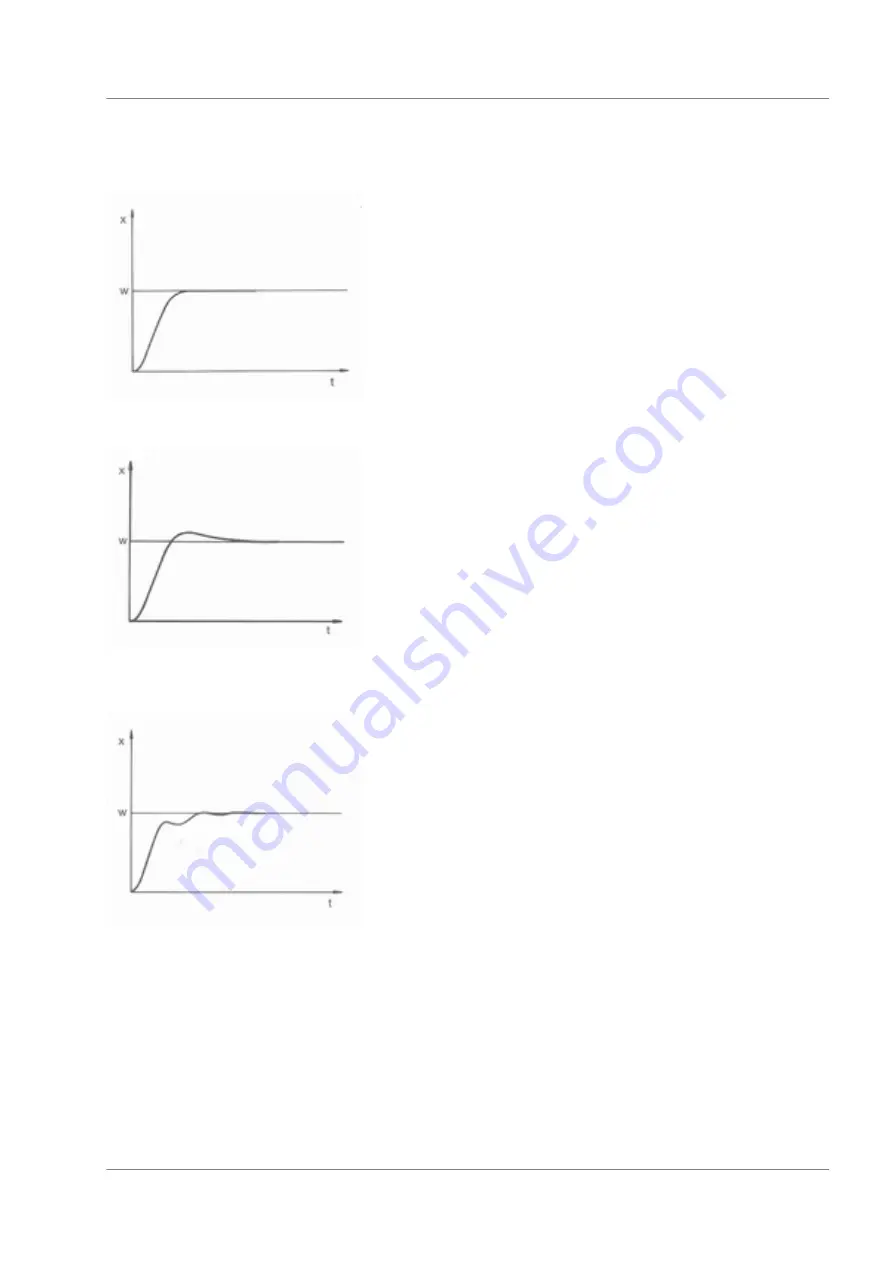
If the Xp parameter selected is too large, the actual value will reach
the proportional range early and the P-component will be less than
100 % of the actuating signal. It takes longer to reach the target
value and as a result, the simultaneously integrated I-component
has more time to establish its actuating signal component. Once
the target value is reached, the excessive addition of the I-compo-
nent causes the value to overshoot the target value. If proportional
range Xp is reduced, the P-component remains at 100 % for
longer. Consequently, the actual value approaches the target value
more quickly and the I-component has less time to integrate the
system deviation. The overshoot is reduced.
If the proportional range selected is too small, the P-component of
the actuating signal remains at 100 % for a long time. This value
decreases even faster within the proportional range, i.e. the
actuating signal decreases rapidly and the progress of the actual
value towards the target value comes almost to a complete stop.
The I-component, which only becomes effective now, causes the
actual value to move slowly towards the target value.
Influence of control parameters on
the control action
Fig. 11: Ideal setting
Fig. 12: Control parameter Xp too
large
Fig. 13: Control parameter Xp too
small
Operation
LOOP
29
Summary of Contents for L 100
Page 22: ...5 2 LOOP menu structure Fig 10 Menu structure Operation LOOP 22 ...
Page 44: ......
Page 46: ......
Page 47: ......
















































